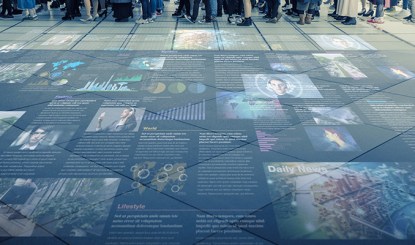Over the last 3-5 years, the term “Digital Transformation” has come to the forefront in the IT industry. Defined as “the use of technology to radically improve performance or reach of enterprises,” digital transformation addresses a theme that is so evident in today’s business world. Unlike any time in history, organizations find themselves having to transform to stay relevant in an environment of rapid change and disruption. When we first saw this term in the marketplace, we used examples like – Netflix, Uber, AirBNB, Alibaba – companies that were not even in existence 10-15 years ago. I’m sure you’ve heard this before. “Uber is a billion dollar transportation company, yet they own no vehicles.” Today, they have come to not only dominate the sectors they are in – they have redefined how their competitors and traditional incumbents in these markets need to adapt/transform in order to stay relevant. So much so that we no longer use them as examples or exceptions, they have become the rule.
What have we learned?
Here is where I can insert some statistics and charts and graphs. But the truth is, I know you already know the answer. Clearly, the ability to leverage technology as an enabler and strategic differentiator has accelerated this business disruption. There are plenty of examples. Regardless of industry, it’s all about the experience.
The goal of digital transformation is that technology must be leveraged to enhance the experience of your client experience, your employee experience, and if you’re a school, then your student experience.
The concept and reality of digital transformation is becoming a major initiative for companies across the globe. Executives in all industries are using digital advances such as analytics, mobility, social media and smart devices, as well as improving their use of traditional technologies such as ERP and CRM, in order to improve customer relationships, optimize internal processes, and create new value propositions. These examples just scratch the surface, embrace the technology and see what you can make happen.
Together makes better.
For those who know me well, they have probably heard me say this next statement a thousand times. In fact, perhaps I should have t-shirts made? Anyway, here we go: “Every Leader is a Technology Leader.” What does this mean? Well, it means that everyone has a part to play in technology. No longer does the technology conversation start and end with the tech team. Furthermore, when organizations are meeting to discuss strategic initiatives, even when on the surface they may not include obvious technology tasks, the technology leadership should be included in those conversations. Let those tech folks in the room and see what happens, Their ideas may surprise you.
Successful digital transformation comes not from just implementing new technologies, but from transforming your organization to take advantage of the possibilities that these technologies provide. Major digital transformation initiatives are centered on re-envisioning the customer experience, operational processes, and business models. Companies are changing how functions work, redefining how people and processes interact, and even evolving the boundaries of the organization.
All of this requires us as leaders in our organizations to develop a culture of constant innovation. We are challenged to support strategies that define new opportunities for transformation, test and validate the assumptions of these ideas, and address the cultural and process changes associated with these outcomes. Technology has moved from the basement to the boardroom. Open the door and give them a seat at the table. When you do, buckle-up because it should prove to be an interesting ride!

